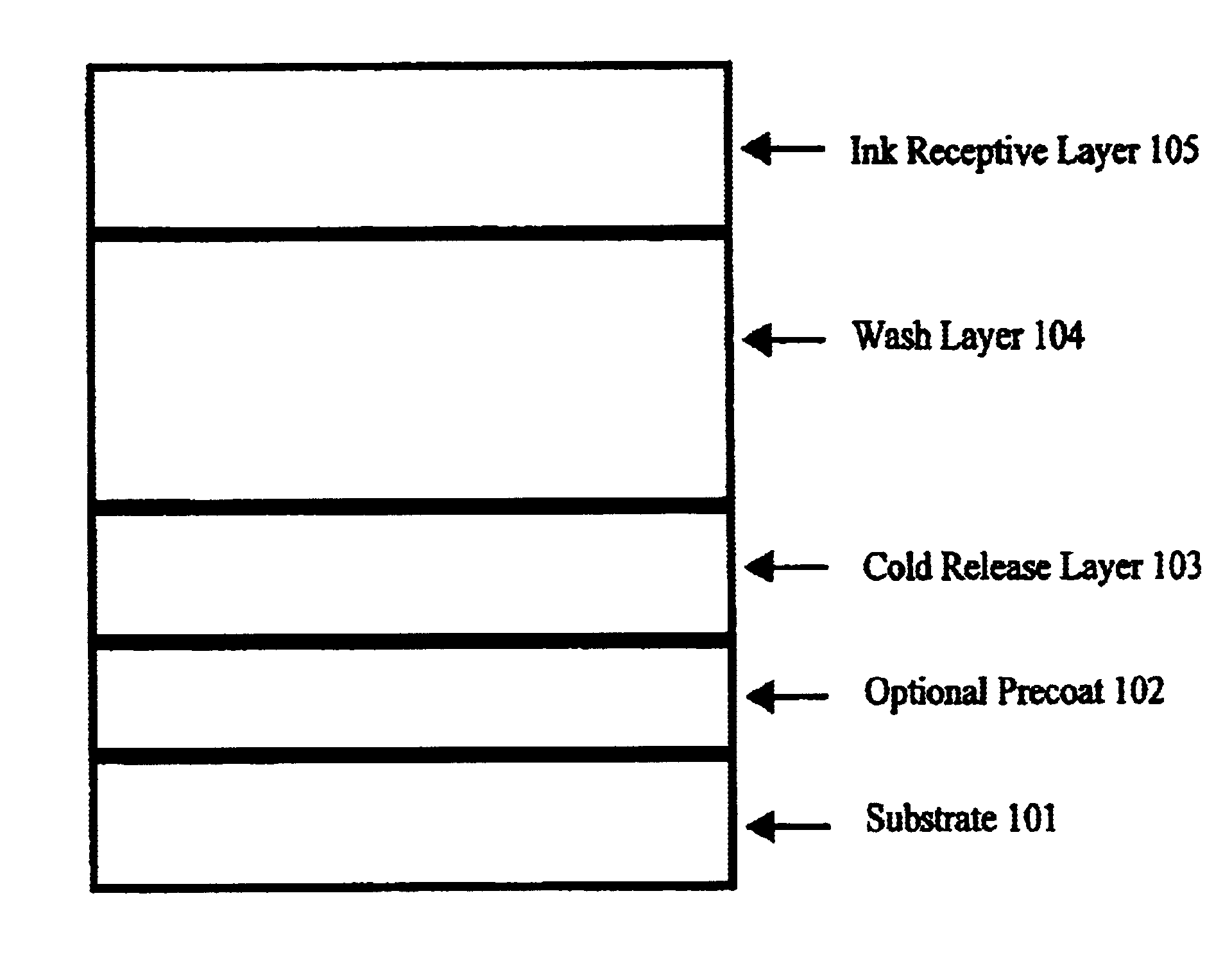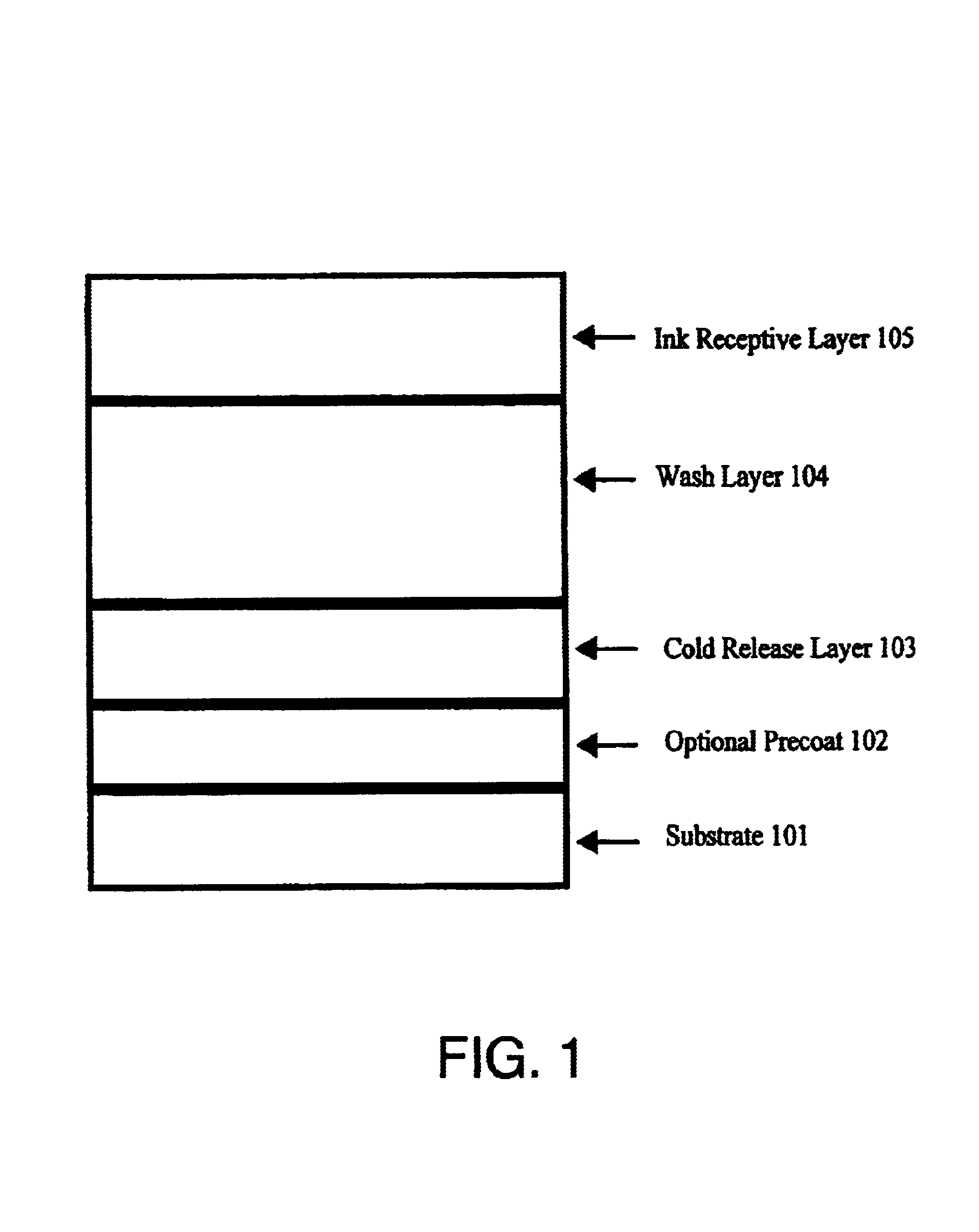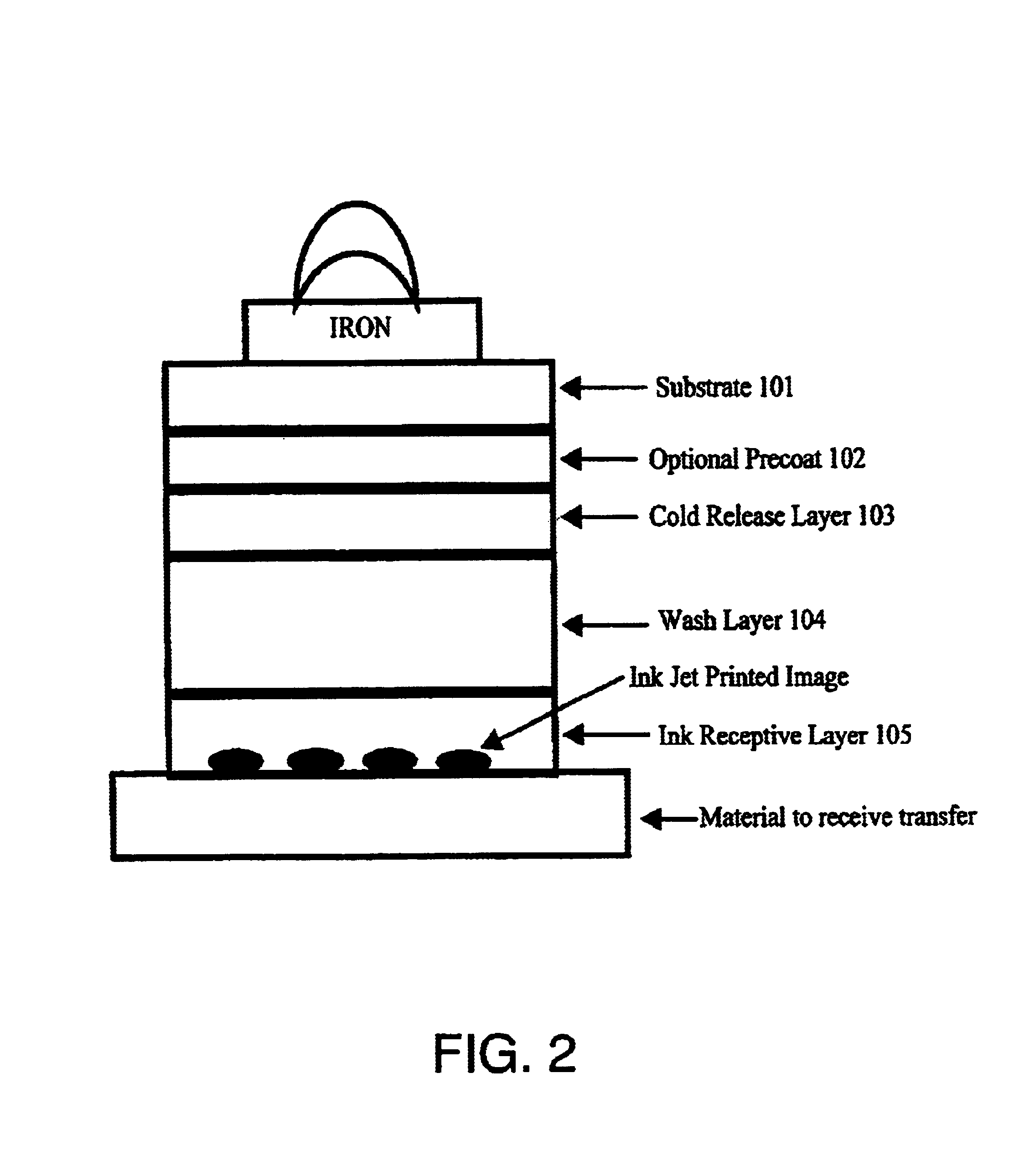Ink jet printable heat transfer paper
- Summary
- Abstract
- Description
- Claims
- Application Information
AI Technical Summary
Benefits of technology
Problems solved by technology
Method used
Image
Examples
example 1
[0034]A substrate was prepared by forming on a fourdrinere paper machine, a fiber mat consisting of 20% hardwood fibers, 60% softwood fibers, and 20% precipitated calcium carbonate. The substrate was then surface treated with oxidized starch to improve surface smoothness and subsequent coating adhesion. The sheet included common retention and formation aids; and an ASA hydrophobic surface modifier known to one skilled in the art.
example 2
[0035]A precoat coat layer was prepared by coating 15 dry gsm of the following coating on a blade coater using the base sheet from example 1. The coating is made up of clay pigment along with high levels of latex and polyvinyl alcohol binder to form a dense surface which resists penetration by and absorption of subsequent coating layers (i.e. increases “holdout”). The improved holdout reduces the necessary coat weight of the cold release coating to achieve a desired level of release. Low cold release coat weights allow for economical production of this product.
[0036]
Dry parts#2 Coating Clay100NuClay from EngelhardPolyvinyl alcohol4Arivol 107 from Air ProductsThickener0.4Carboxymethylcellulose fromHerculesLatex Binder4Dow 620 from Dow Chemical
[0037]The coated sheet was run through a hot nip super calendar to smooth and densify the surface. This sheet has excellent holdout for the cold release layer coating.
example 3a
[0038]A cold release layer was prepared by coating 2 dry gsm of the following coating on a gravure coater using the basesheet from example 2. The use of silicone chemistry to produce a cold peel heat transfer sheet is unique and a key element of this invention. The right combination of adhesion to subsequent coating layers must be balanced with the desired release properties after the image is transferred. A silicone surface with a surface energy that is too low will not allow adhesion with subsequent coating layers. Consequently, the wash layer will either not adhere to or will prematurely release from the cold release layer. A silicone surface with a surface energy that is too high will not release the subsequent layers after the transfer is made, which results in an unusable product. A blend of silicones to achieve the desired release characteristics is also permissible in this invention. The use of a matting agent is optional, though generally desirable in this invention to give...
PUM
| Property | Measurement | Unit |
|---|---|---|
| Fraction | aaaaa | aaaaa |
| Fraction | aaaaa | aaaaa |
| Fraction | aaaaa | aaaaa |
Abstract
Description
Claims
Application Information
 Login to View More
Login to View More - R&D
- Intellectual Property
- Life Sciences
- Materials
- Tech Scout
- Unparalleled Data Quality
- Higher Quality Content
- 60% Fewer Hallucinations
Browse by: Latest US Patents, China's latest patents, Technical Efficacy Thesaurus, Application Domain, Technology Topic, Popular Technical Reports.
© 2025 PatSnap. All rights reserved.Legal|Privacy policy|Modern Slavery Act Transparency Statement|Sitemap|About US| Contact US: help@patsnap.com



